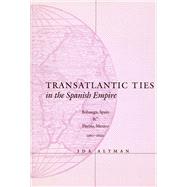Transatlantic Ties in the Spanish Empire
, by Altman, Ida- ISBN: 9780804736633 | 0804736634
- Cover: Hardcover
- Copyright: 6/1/2000
Between 1560 and 1620, a thousand or more people left the town of Brihuega in Spain to migrate to New Spain (now Mexico), where nearly all of them settled in Puebla de los Angeles, New Spain's second most important city. A medium-sized community of about four thousand people, Brihuega had been a center of textile production since the Middle Ages, but in the latter part of the sixteenth century its industry was in decline--a circumstance that induced a significant number of its townspeople to emigrate to Puebla, where conditions for textile manufacturing seemed ideal. The immigrants from Brihuega played a crucial role in making Puebla the leading textile producer in New Spain, and they were otherwise active in the city's commercial-industrial sector as well. Although some immigrants penetrated the higher circles ofpoblanosociety and politics, for the most part they remained close to their entrepreneurial and artisanal origins. Closely associated through business, kinship, marital, andcompadrazgoties, and in residential patterns, the Brihuega immigrants in Puebla constituted a coherent and visible community. This book uses the experiences and activities of the immigrants as a basis for analyzing society in Brihuega and Puebla, making direct comparisons between the two cities by examining such topics as mobility and settlement; politics and public life; economic activity; religious life; social relations; and marriage, family, and kinship. In tracing the socioeconomic, cultural, and institutional patterns of a town in Spain and a city in New Spain--in all their connections, continuities, and discontinuities--the book offers a new basis for understanding the process and implications of the transference of these patterns within the early modern Hispanic world.






